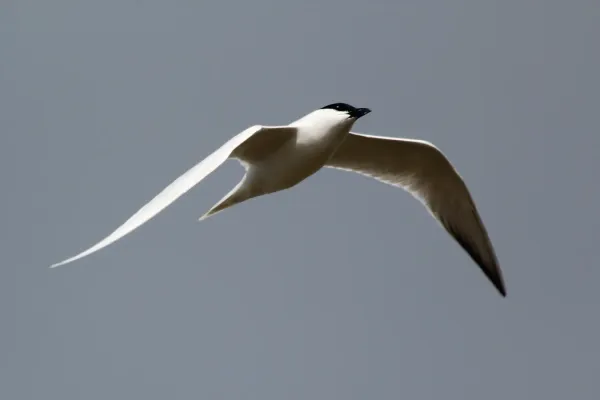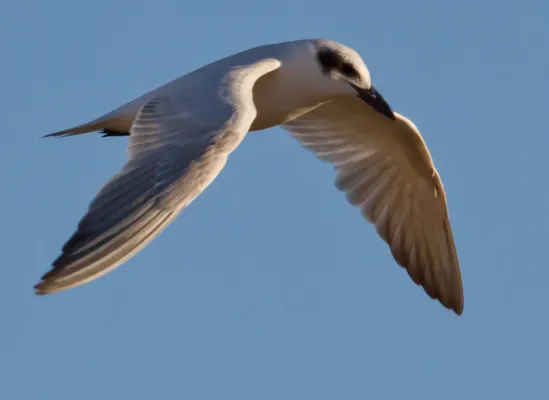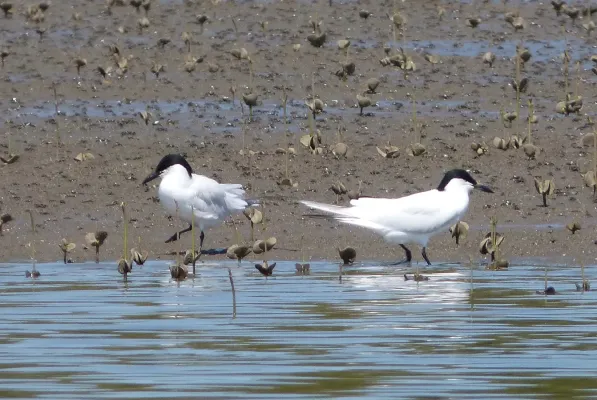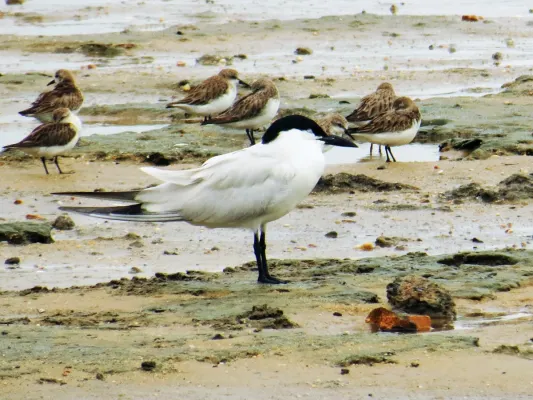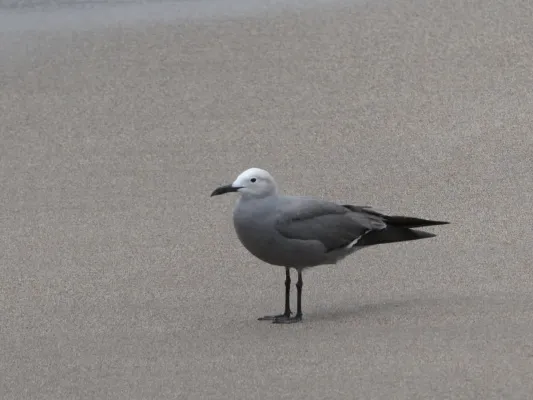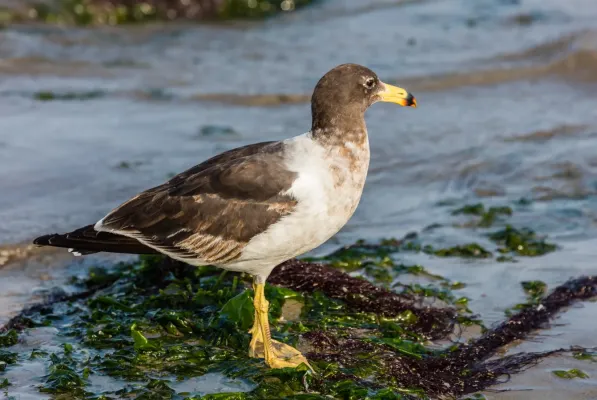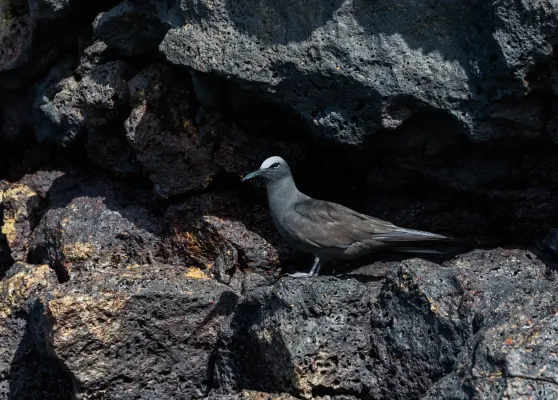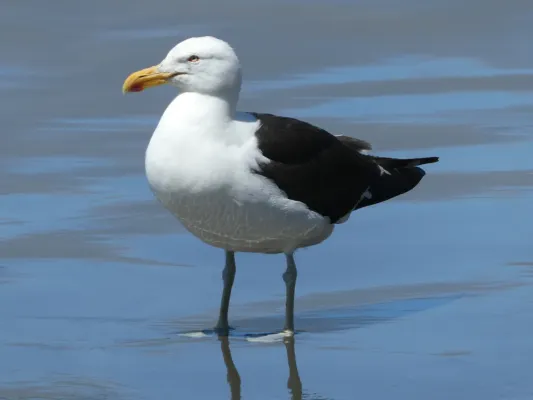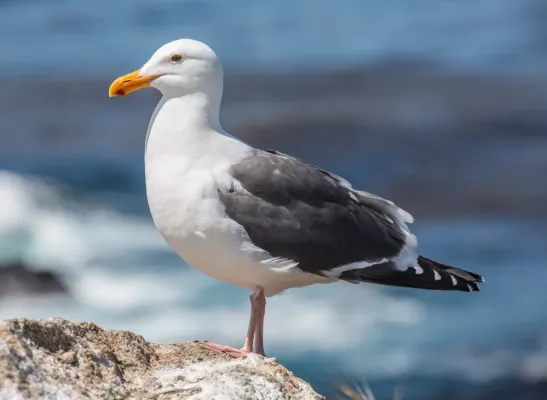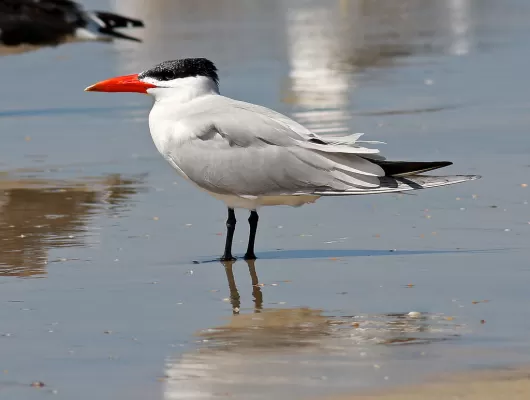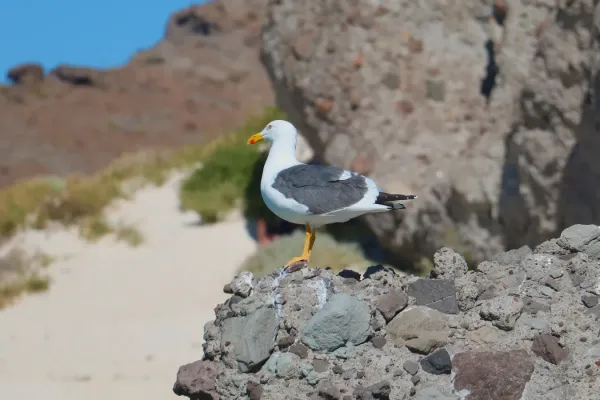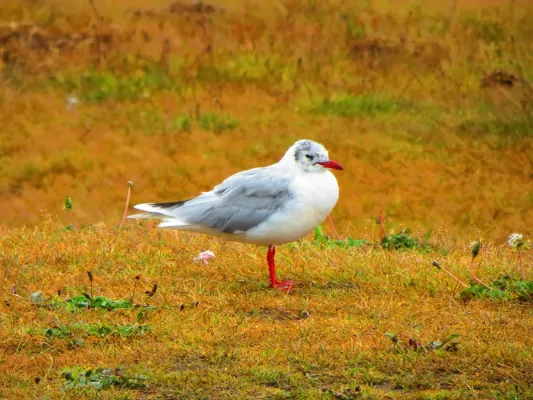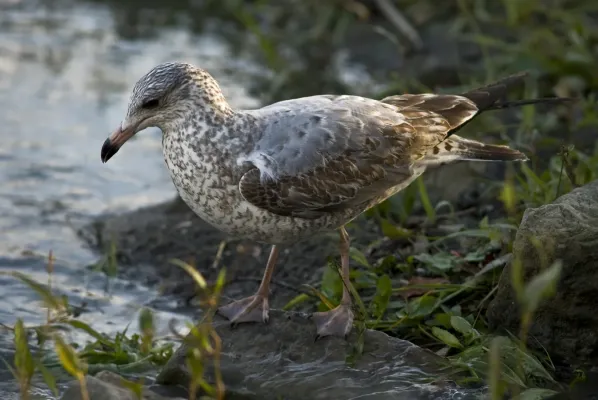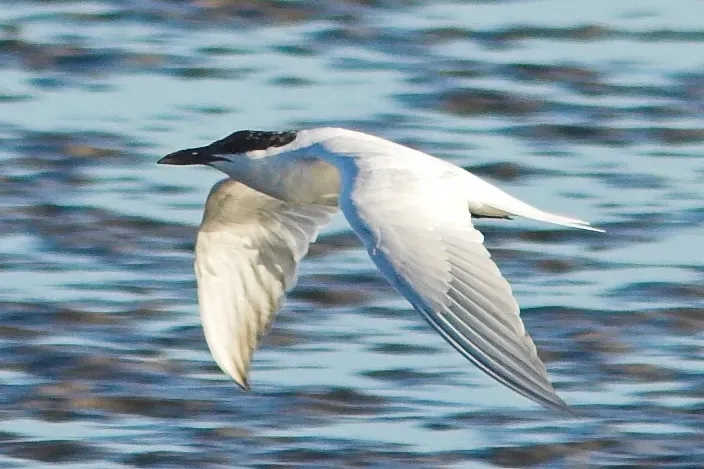
Australian Tern
Australian Tern
100
2 hours ago
Not yet spotted on Fladder
Spotted
The Gull-billed Tern is a medium-sized tern with a unique, stout black bill that resembles a gull's, hence its name. Unlike most terns, it often feeds on insects and small land animals in addition to fish. It is found in diverse coastal and inland wetlands across many continents.
Where to spot
Globally distributed across coastal and inland wetlands of temperate and tropical regions. Found in North and South America, Europe, Africa, Asia, and Australia. Prefers estuaries, saltmarshes, lagoons, and large inland lakes.
How to spot
Look for its heavy, all-black bill (gull-like), black cap (breeding), white underparts, and pale grey upperparts. Observe its distinctive feeding behavior, often flying slower and lower than other terns, snatching prey from the surface of water or land rather than plunge-diving.
When to spot
Breeding occurs from spring to summer (Northern Hemisphere: April-July; Southern Hemisphere: October-February). Migratory in colder regions, present year-round in tropical areas. Best observed during daylight hours foraging over wetlands.
Where to spot
Globally distributed across coastal and inland wetlands of temperate and tropical regions. Found in North and South America, Europe, Africa, Asia, and Australia. Prefers estuaries, saltmarshes, lagoons, and large inland lakes.
How to spot
Look for its heavy, all-black bill (gull-like), black cap (breeding), white underparts, and pale grey upperparts. Observe its distinctive feeding behavior, often flying slower and lower than other terns, snatching prey from the surface of water or land rather than plunge-diving.
When to spot
Breeding occurs from spring to summer (Northern Hemisphere: April-July; Southern Hemisphere: October-February). Migratory in colder regions, present year-round in tropical areas. Best observed during daylight hours foraging over wetlands.
Gull-billed Terns are one of the few tern species that frequently forage over land, catching large insects like dragonflies in mid-air, a behavior atypical for most terns that are primarily piscivorous.
Loading...
Spotted
- Recently spotted
- 1343 (Seen in the last 3 months)
- Last spotted
- 2 hours ago
Monthly observations
No observations
Loading...
Nothing spotted yet

